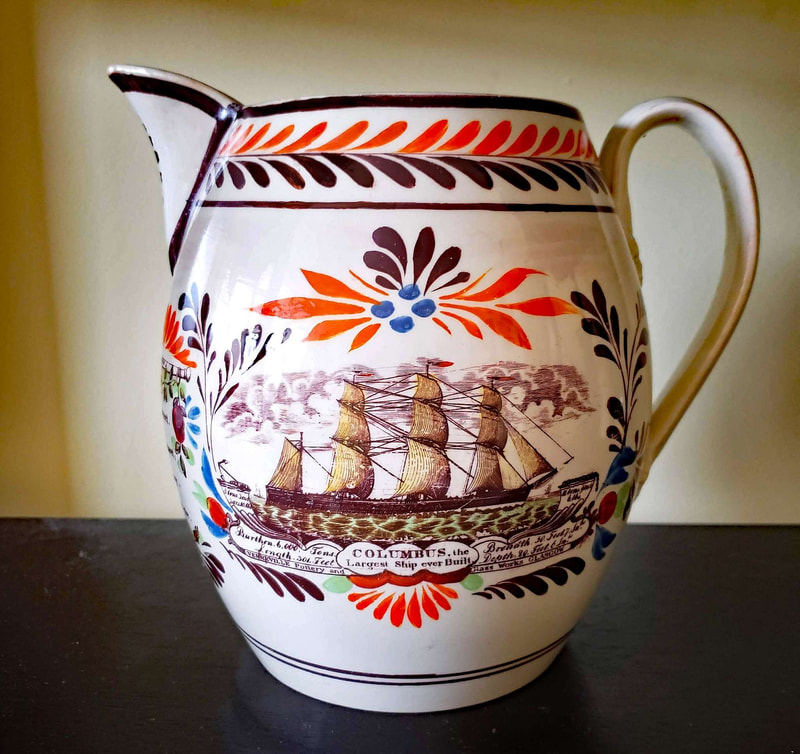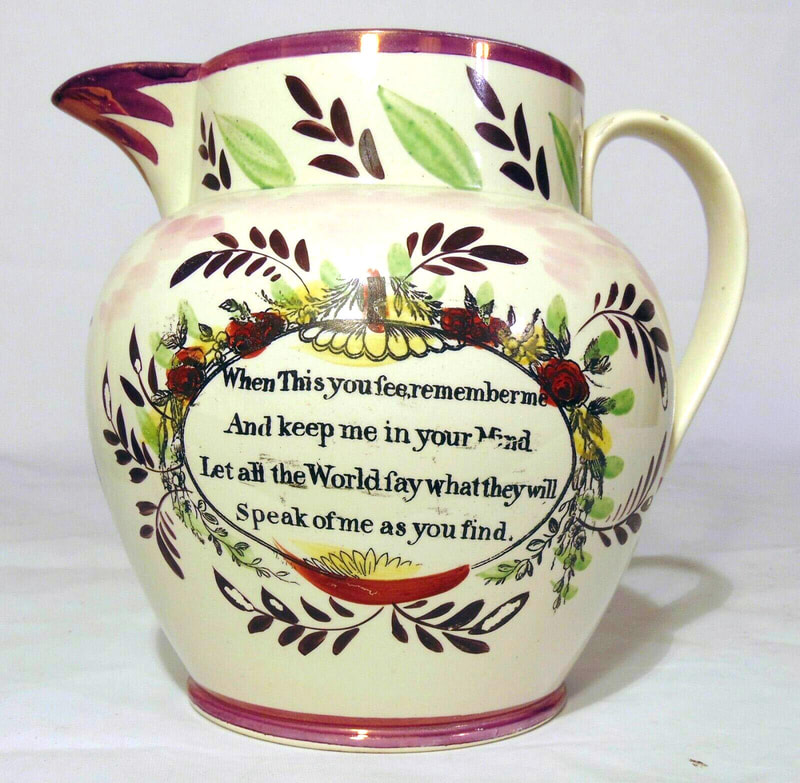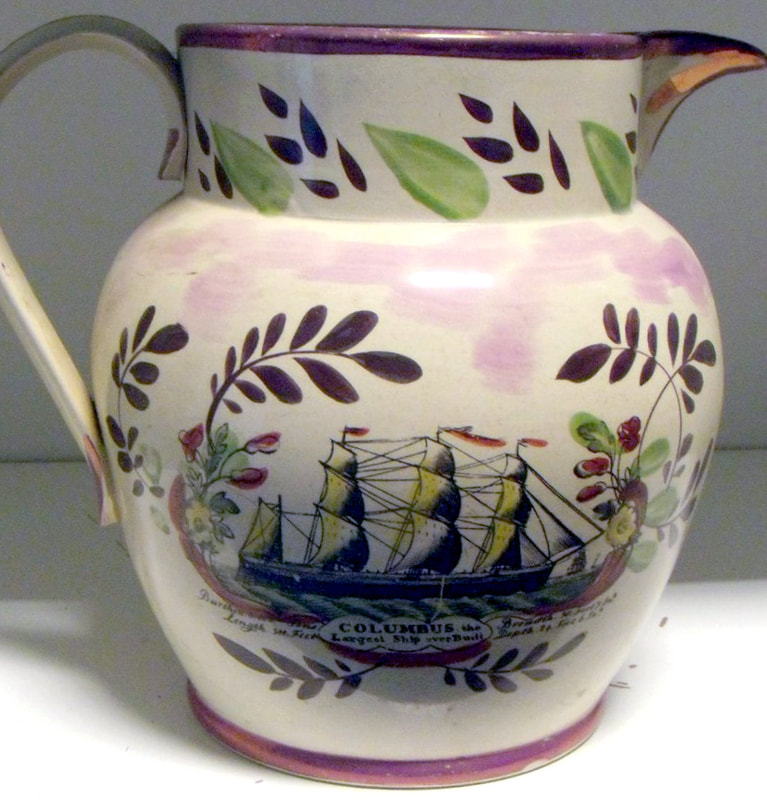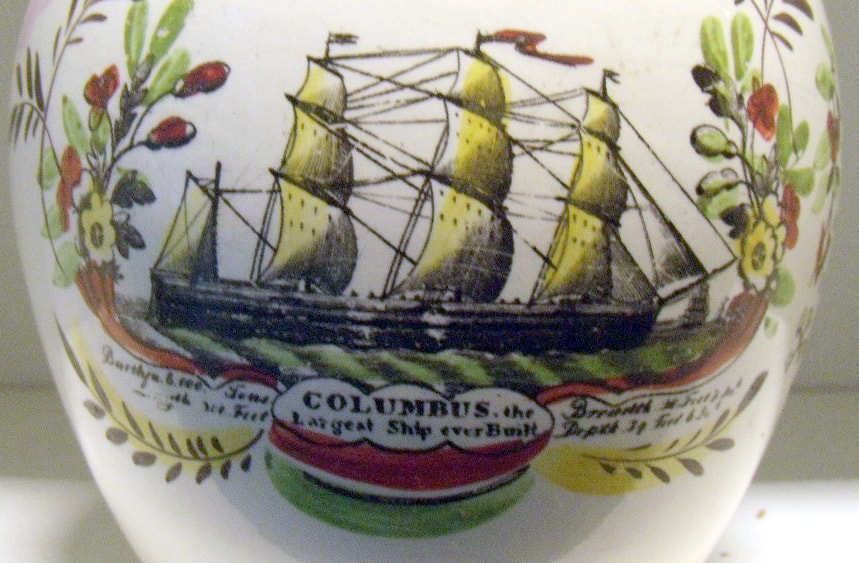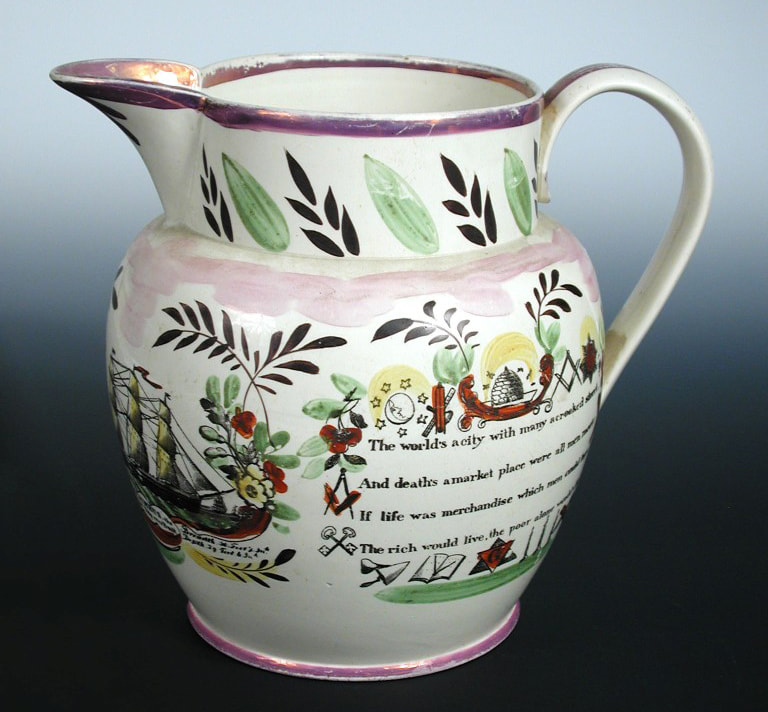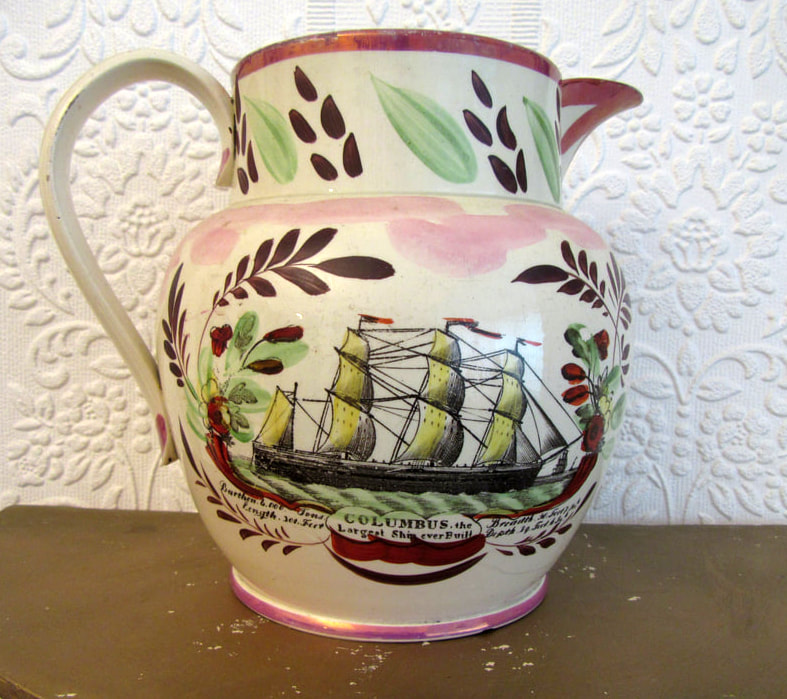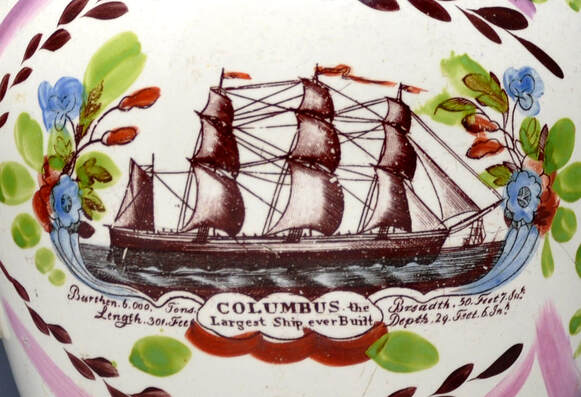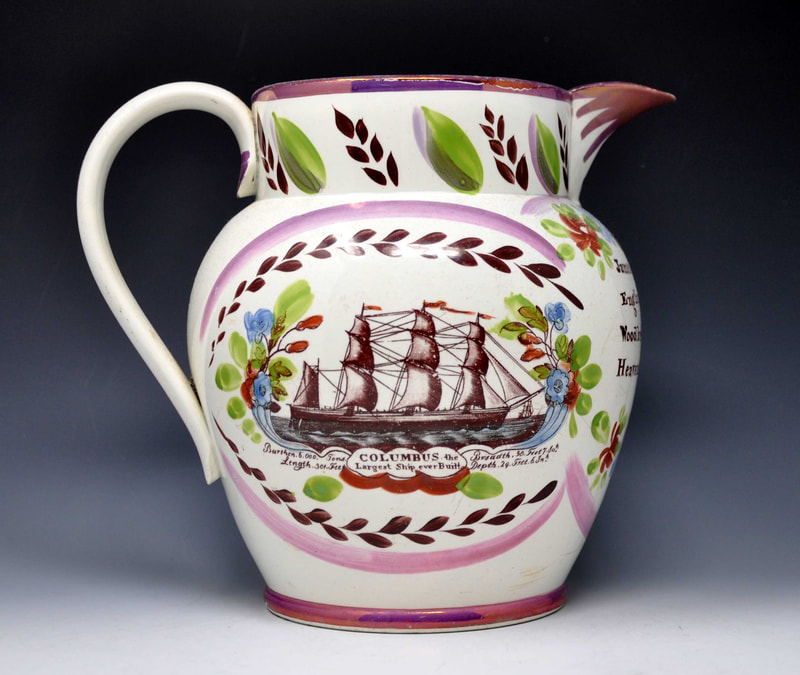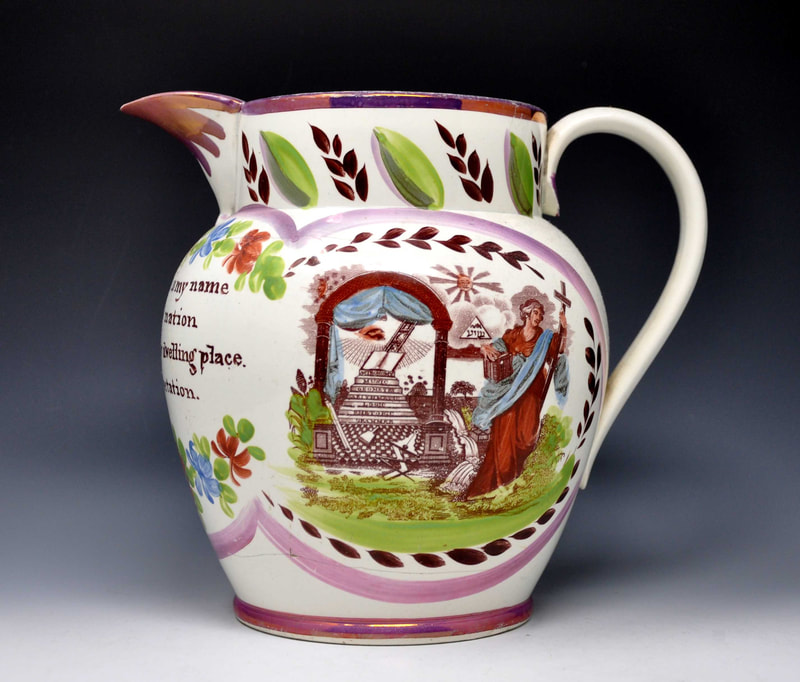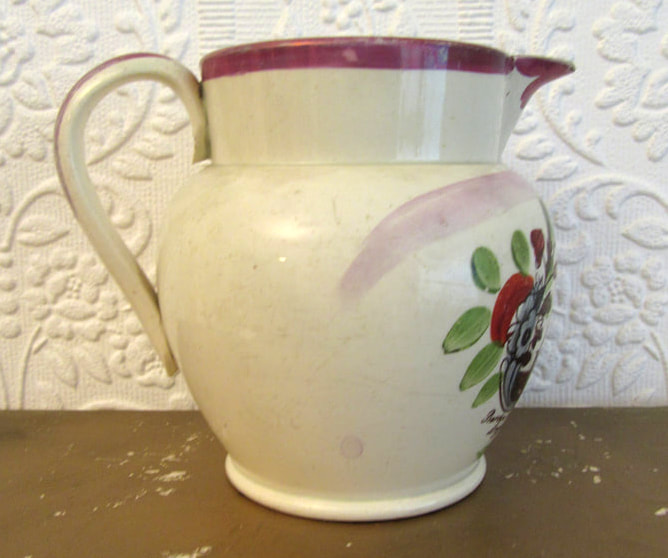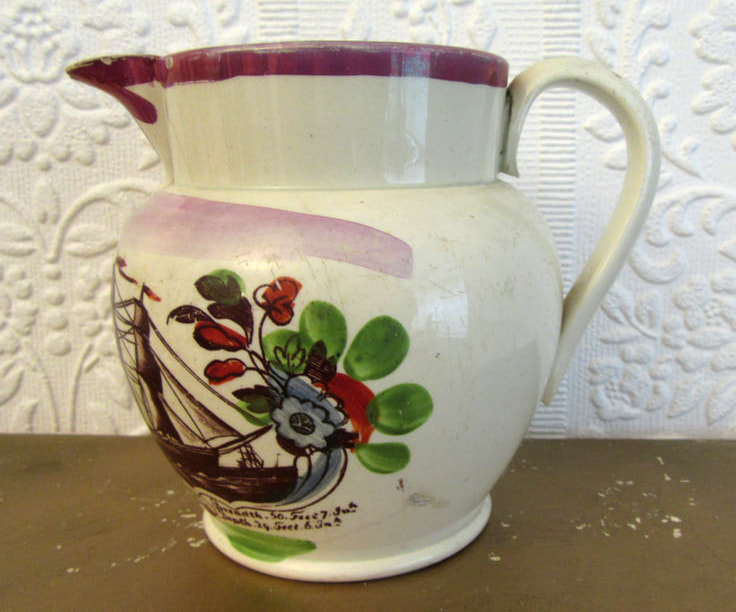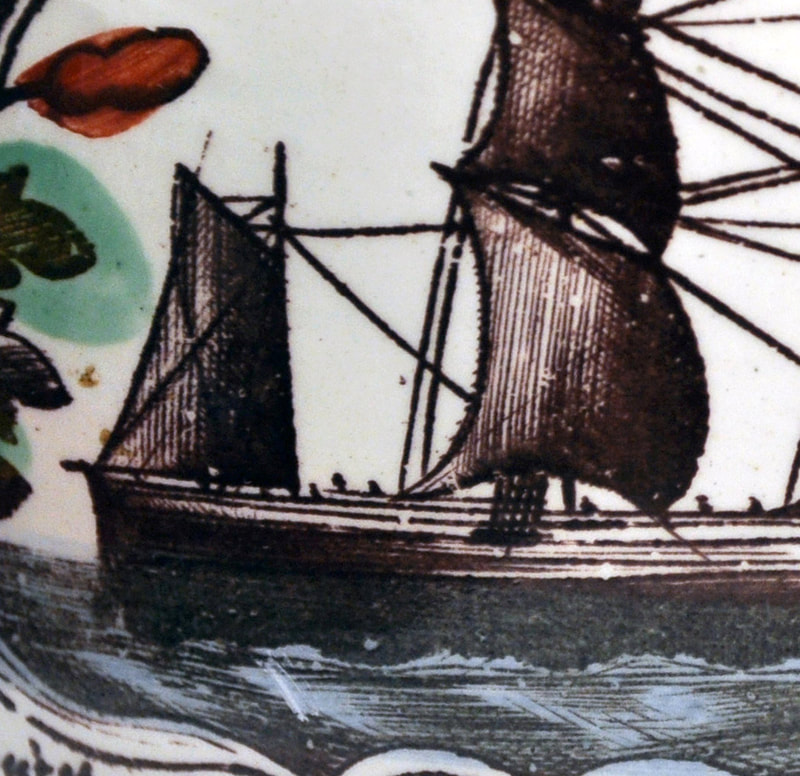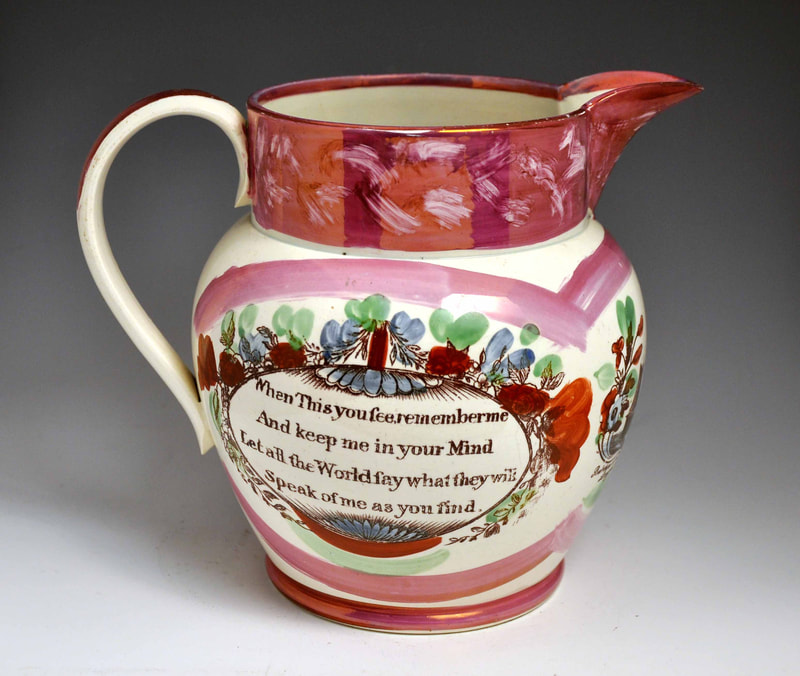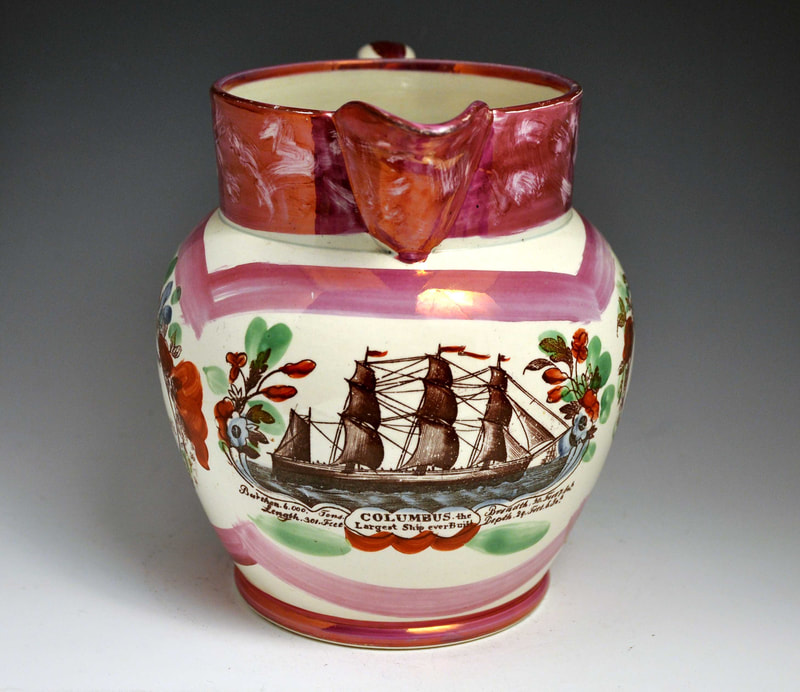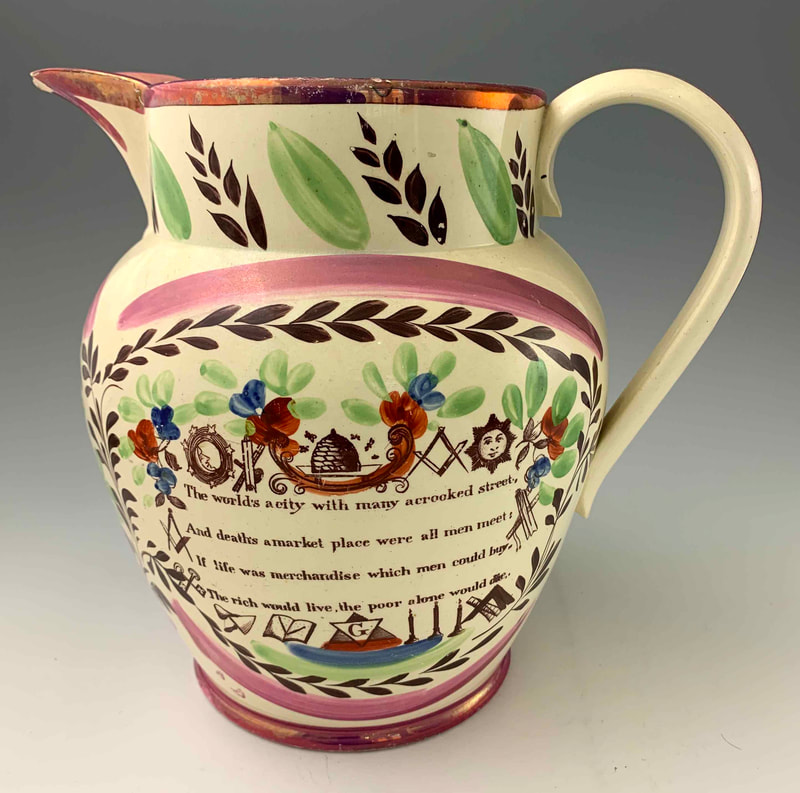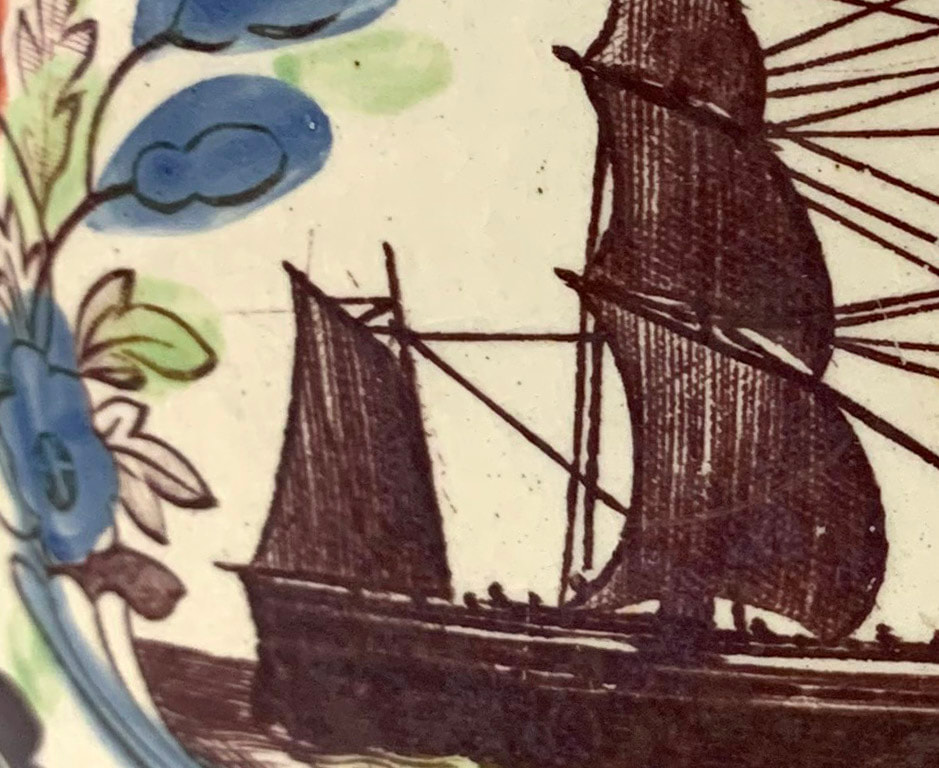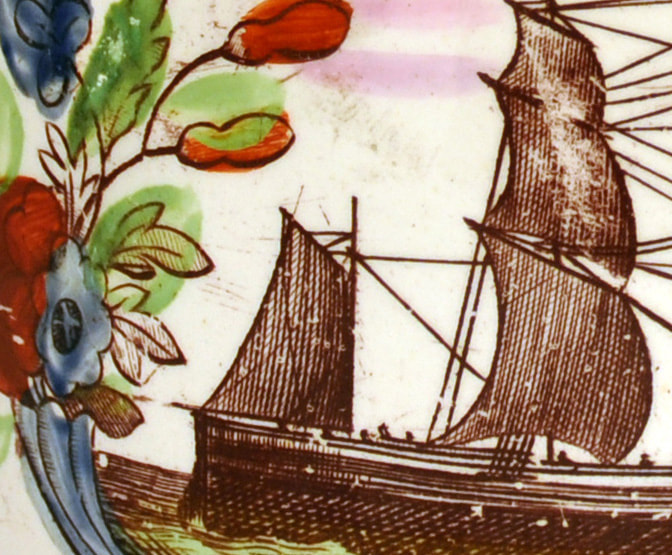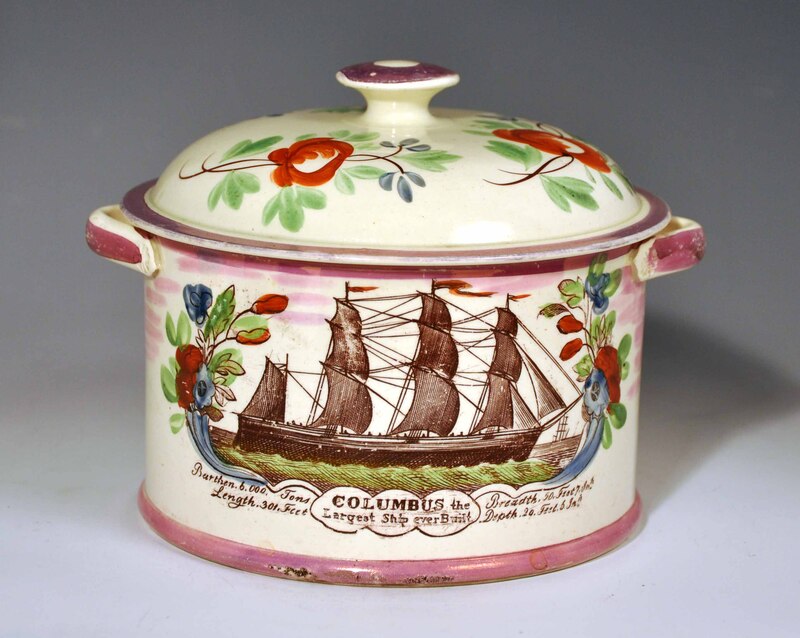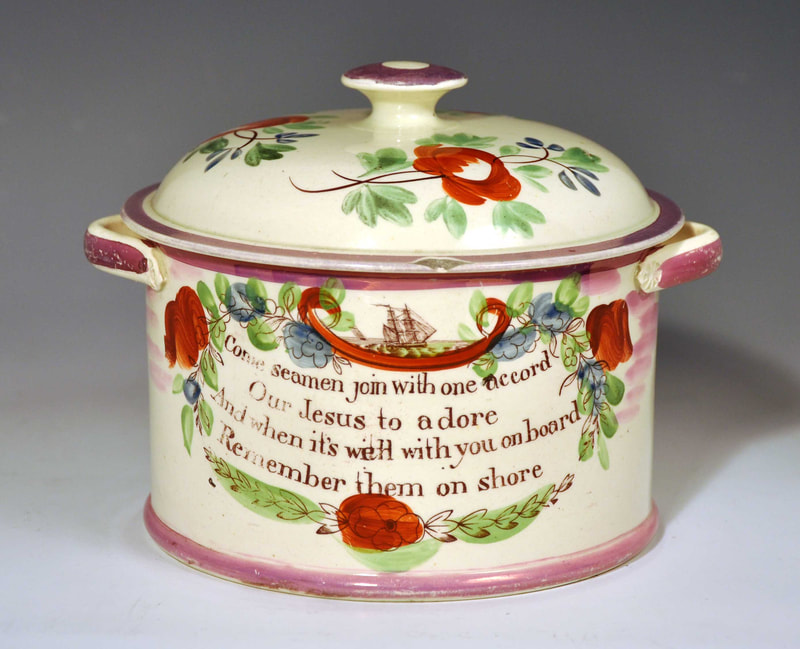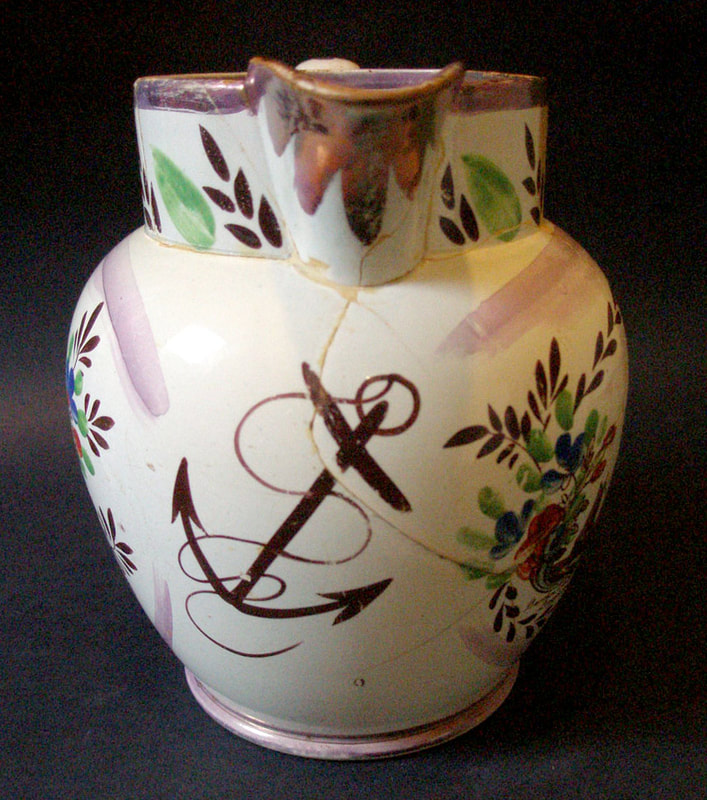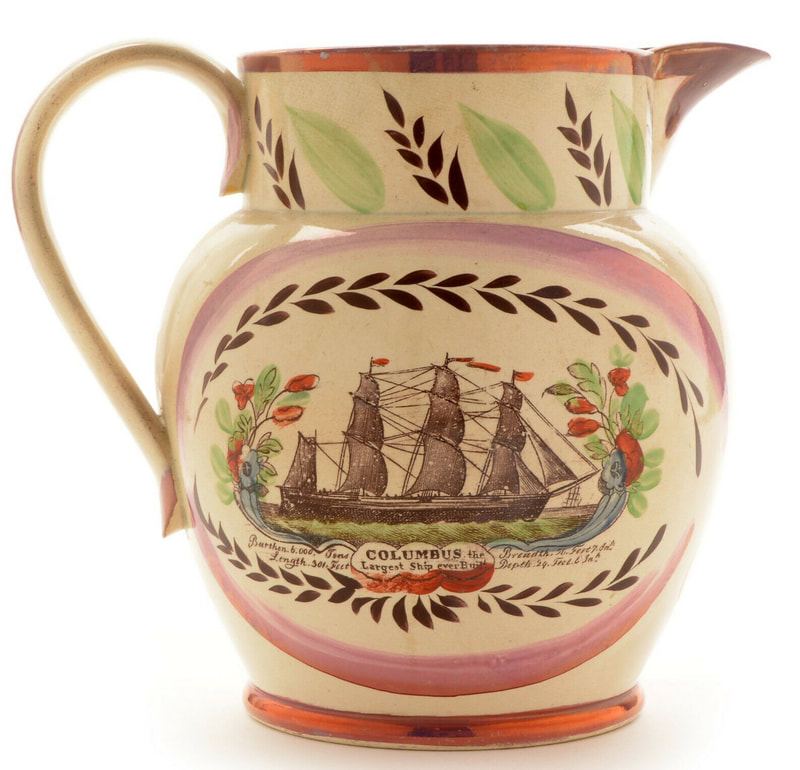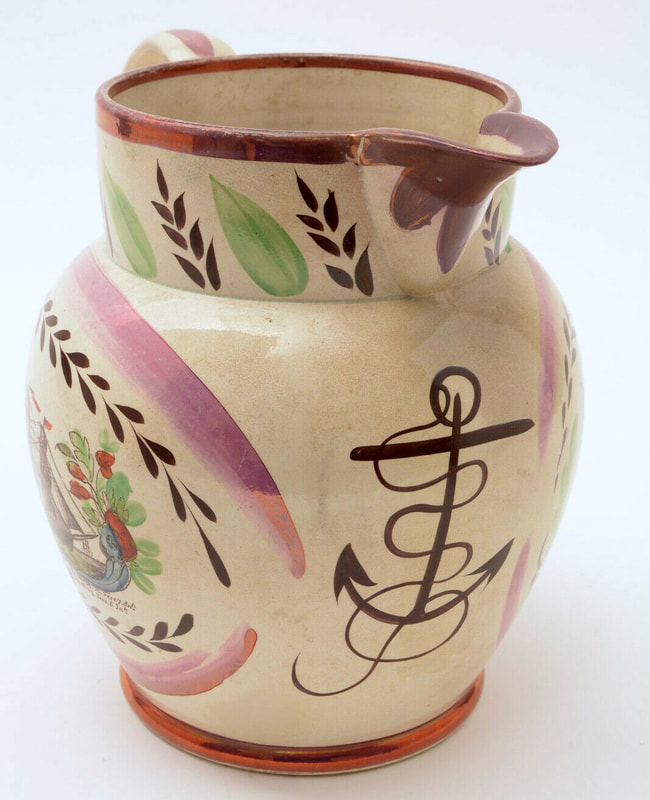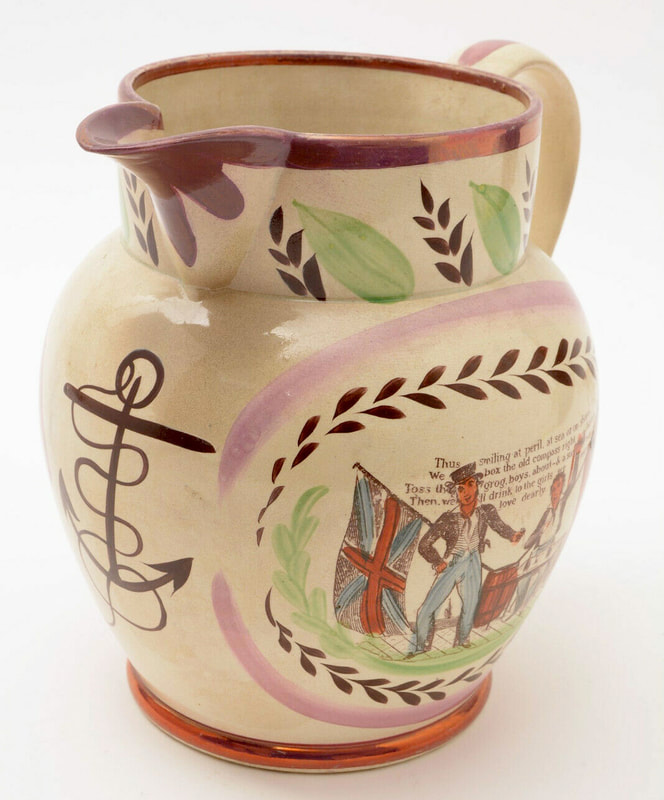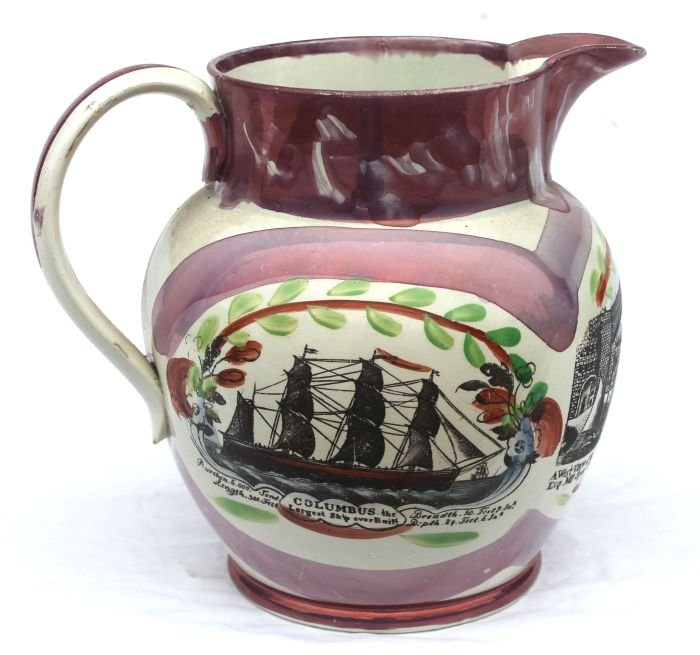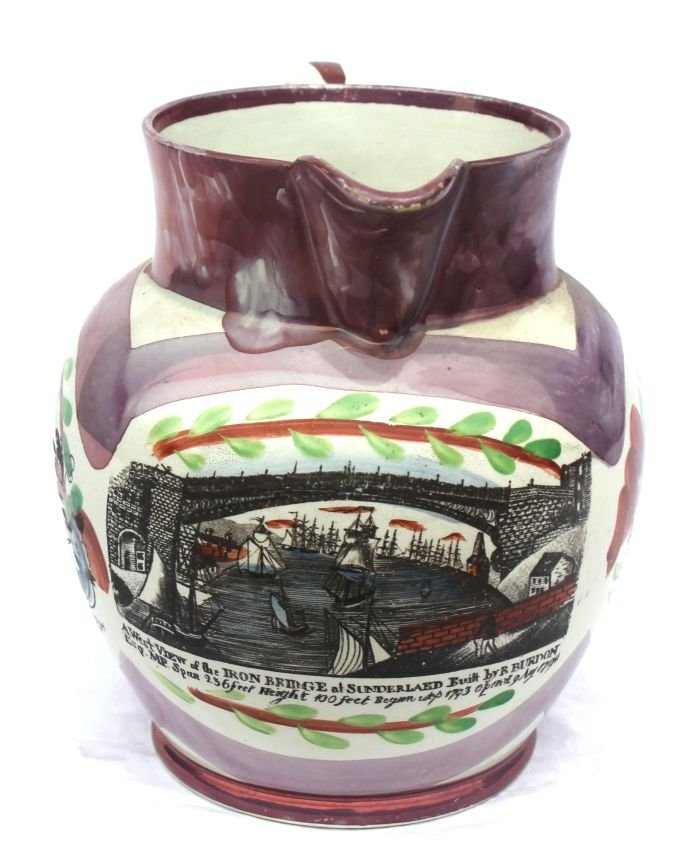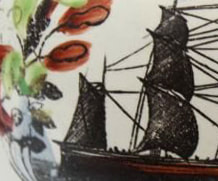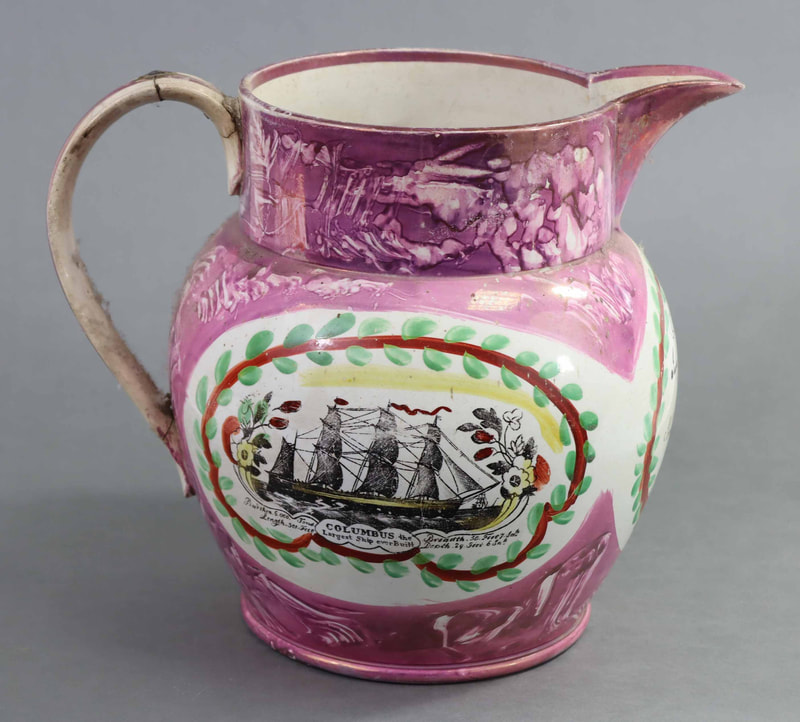COLUMBUS the Largest Ship ever Built
|
This transfer was copied by Robert Maling from items produced by the Verreville Pottery in Glasgow (see right). It appears that the pot painter/enameller from Verreville moved to Newcastle and worked at the Ouseburn Bridge Pottery in the early 1820s, bringing several of their designs with him. Wheat ear decoration, painted on the collars of jugs, appears on earlier Verreville items. |
Attributed to Robert Maling, Ouseburn Bridge Pottery – group 1, early 1820s
This appears to be the earliest Tyne version of the transfer. Note the rows of 'reefing lines' on the ship's sails.
Below are three further jugs with this version of the transfer.
Attributed to Robert Maling, Ouseburn Bridge Pottery – group 2, mid to late 1820s
In this variation of the transfer, the sails are still only partially shaded, but there are no reefing lines (vertical dashes). The jug below has an inscription dated 1829. Beneath it a smaller jug with a similar imprint.
In the absence of dated inscriptions, putting these jugs in chronological order isn't an exact science. This imprint is from the same copper plate as the group 2 jugs above, but after a round of reengraving. Note that the sails are now more heavily shaded.
|
There is a miniscule speckle that appears on the first group 2 jug above (left detail, indicated in red), which very faintly reproduces on the jug below (right detail). Also, note the diagonal scratch above the sail at the rear of the ship, which is much fainter in the earlier imprint (more on that below). |
|
From this point on in the sequence, the sails are shaded black all over. So, interestingly, there appears to have been some overlap in production of jugs with wheat ear collars, and those with pink lustre collars. But there was also variation in the whiteness of the body of the pottery. What would be really helpful, would be to find a few more dated examples.
|
|
The eel pot and jug below come from the same copper plate as the large jug above. Note the diagonal scratch just above the rear sail. |
The jug below is also likely from the same transfer plate although the scratch is less obvious.
Attributed to Robert Maling, Ouseburn Bridge Pottery – early to mid 1830s
The jugs above and below come from the same transfer plate as the items from wheat ear decorated group 2 above (left detail). Note again the diagonal scratch above the rear sail.
The jug below has an inscription dated 1833.

